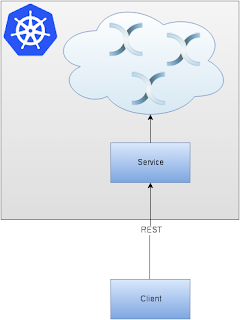Running Infinispan cluster on Kubernetes

Running Infinispan cluster on Kubernetes
In the previous post we looked how to run Infinispan on OpenShift. Today, our goal is exactly the same, but we’ll focus on Kubernetes.
Running Infinispan on Kubernetes requires using proper discovery protocol. This blog post uses Kubernetes Ping but it’s also possible to use Gossip Router.
Our goal
We’d like to build Infinispan cluster based on Kubernetes hosted locally (using Minikube). We will expose a service and route it to our local machine. Finally, we will use it to put data into the grid.
Spinning local Kubernetes cluster
There are many ways to spin up a local Kubernetes cluster. One of my favorites is Minikube. At first you will need the 'minikube' binary, which can be downloaded from Github releases page. I usually copy it into '/usr/bin' which makes it very convenient to use. The next step is to download 'kubectl' binary. I usually use Kubernetes Github releases page for this. The 'kubectl' binary is stored inside the release archive under 'kubernetes/platforms/<your_platform>/<your_architecture>/kubectl'. I’m using linux/amd64 since I’m running Fedora F23. I also copy the binary to '/usr/bin'.
We are ready to spin up Kubernetes:
Deploying Infinispan cluster
This time we’ll focus on automation, so there will be no 'kubectl edit' commands. Below is the yaml file for creating all necessary components in Kubernetes cluster:
-
(lines 23 - 24) - We added additional arguments to the bootstrap scipt
-
(lines 26 - 30) - We used Downward API for pass the current namespace to the Infinispan
-
(lines 34 - 45) - We defined all ports used by the Pod
-
(lines 49 - 66) - We created a service for port 8080 (the REST interface)
-
(line 64) - We used NodePort service type which we will expose via Minikube in the next paragraph
Save it somewhere on the disk and execute 'kubectl create' command:
Exposing the service port
One of the Minikube’s limitations is that it can’t use Ingress API and expose services to the outside world. Thankfully there’s other way - use Node Port service type. With this simple trick we will be able to access the service using '<minikube_ip>:<node_port_number>'. The port number was specified in the yaml file (we could leave it blank and let Kubernetes assign random one). The node port can easily be checked using the following command:
In order to obtain the Kubernetes node IP, use the following command:
Testing the setup
Testing is quite simple and the only thing to remember is to use the proper address - <minikube_ip>:<node_port>:
Clean up
Minikube has all-in-one command to do the clean up:
Conclusion
Kubernetes setup is almost identical to the OpenShift one but there are a couple of differences to keep in mind:
-
OpenShift’s DeploymentConfiguration is similar Kubernetes Deployment with ReplicaSets
-
OpenShift’s Services work the same way as in Kubernetes
-
OpenShift’s Routes are similar to Kubernetes' Ingresses
Happy scaling and don’t forget to check if Infinispan formed a cluster (hint - look into the previous post).
Get it, Use it, Ask us!
We’re hard at work on new features, improvements and fixes, so watch this space for more announcements!Please, download and test the latest release.
The source code is hosted on GitHub. If you need to report a bug or request a new feature, look for a similar one on our GitHub issues tracker. If you don’t find any, create a new issue.
If you have questions, are experiencing a bug or want advice on using Infinispan, you can use GitHub discussions. We will do our best to answer you as soon as we can.
The Infinispan community uses Zulip for real-time communications. Join us using either a web-browser or a dedicated application on the Infinispan chat.





